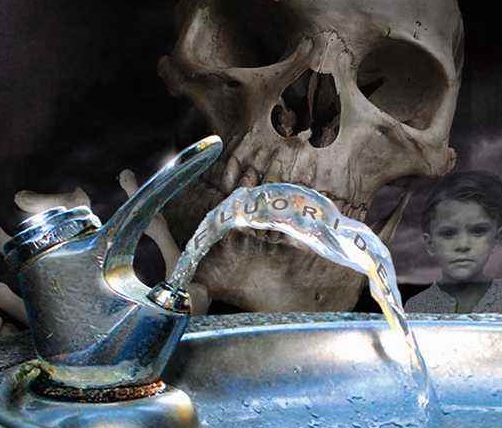Don’t inhale the… water? Study reveals bacteria which causes Legionnaire’s disease can infect people through water in the air
09/24/2019 / By Edsel Cook

The bacteria responsible for Legionnaire’s disease live in water. But researchers warned that tiny water droplets containing the disease-causing Legionella microbe are floating in the air. Their study indicated that people might get infected if they inhaled the airborne droplets of contaminated water.
Supported by Arizona State University (ASU) and Drexel University, the researchers investigated how Legionella pneumophila grew and spread within indoor water sources. They found that exposure to contaminated water spraying from showers, sinks, and toilets increased the risk of developing the waterborne disease.
“Most people in the United States think we have a handle on our water quality problems and drinking water isn’t something we need to worry about anymore,” warned ASU researcher Dr. Kerry Hamilton, the lead author of the study. “If anything, the recent water crisis in Flint, Michigan, and frequent Legionnaires’ disease outbreaks across the nation have demonstrated that’s not the case.”
Legionella is the pathogenic microorganism that causes Legionnaire’s disease. It is responsible for several recent outbreaks with 10 to 25 percent of the cases ending in fatalities. One of the most lethal waterborne diseases in the U.S., Legionella infects people who swallow or inhale it. (Related: Ohio hospital spreading deadly infectious disease through its water systems.)
Examining the risk of Legionnaire’s disease from various sources of bacterial exposure
The ASU and Drexel researchers investigated locations where people get exposed to moist environments with plenty of water in the air. Such environments might increase the chances of contracting Legionnaire’s disease.

|
Discover how to prevent and reverse heart disease (and other cardio related events) with this free ebook: Written by popular Natural News writer Vicki Batt, this book includes everything you need to know about preventing heart disease, reversing hypertension, and nurturing your cardiac health without medication. Learn More. |
Their assessment of exposure risk included factors like taking a shower, using a sink, flushing a toilet, and utilizing water with various levels of bacteria. They evaluated these factors on their own and in combination with any of the others.
Furthermore, the researchers kept in mind that older people or patients with existing health problems displayed greater vulnerability to Legionnaire’s disease than younger, healthier people. They also looked at the effects of water-efficient fixtures in green buildings on the risk of infection.
They also drew from existing information about the size, spray, and volume of aerosol particles from different showers, faucets, and toilets.
Legionella bacteria live in water but spread through airborne water droplets
The ASU-Drexel assessment showed that the risk of Legionnaire’s disease increased if a person got exposed to more than one source of Legionella bacteria. The chances of infection also increased if the immune system of the person got compromised by age or another health problem.
“We found that shower risks were highest, likely due to the amount of time a person would be exposed to the water spray,” explained Drexel researcher Dr. Charles Haaas, who co-authored the paper alongside Hamilton. “Risk of exposure from water efficient fixtures tended to be slightly less if concentrations are comparable to those at conventional water fixtures, because they produce fewer inhalable aerosol particles due to a less powerful or more distributed spray.”
While the study focused on L. pneumophila bacteria, its framework might be adopted by anyone who want to assess the risk of exposure to other strains of bacteria in building water systems. Water quality evaluators might use it as a broad guide for prescribing acceptable concentrations of bacteria in indoor sources of water.
Legionella colonies are more likely to form and flourish in buildings with complicated indoor water systems, especially those with places that water can stagnate for long periods. Seasonal homes and water-efficient homes are considered especially vulnerable to Legionella contamination.
Hamilton warned that current guidelines on acceptable bacteria levels in indoor water systems failed to assess the scenario from a technical standpoint. His team’s approach offered more accurate guidance on water quality.
Sources include:
Tagged Under: airborne disease, bacteria, bacterial infection, clean water, contaminated water, Diseases, environment, infections, infectious diseases, Legionella pneumophila, legionellosis, Legionnaire's disease, outbreak, shower, sink, superbugs, toilet, Water contamination, water quality, water sources, water systems, waterborne disease


















